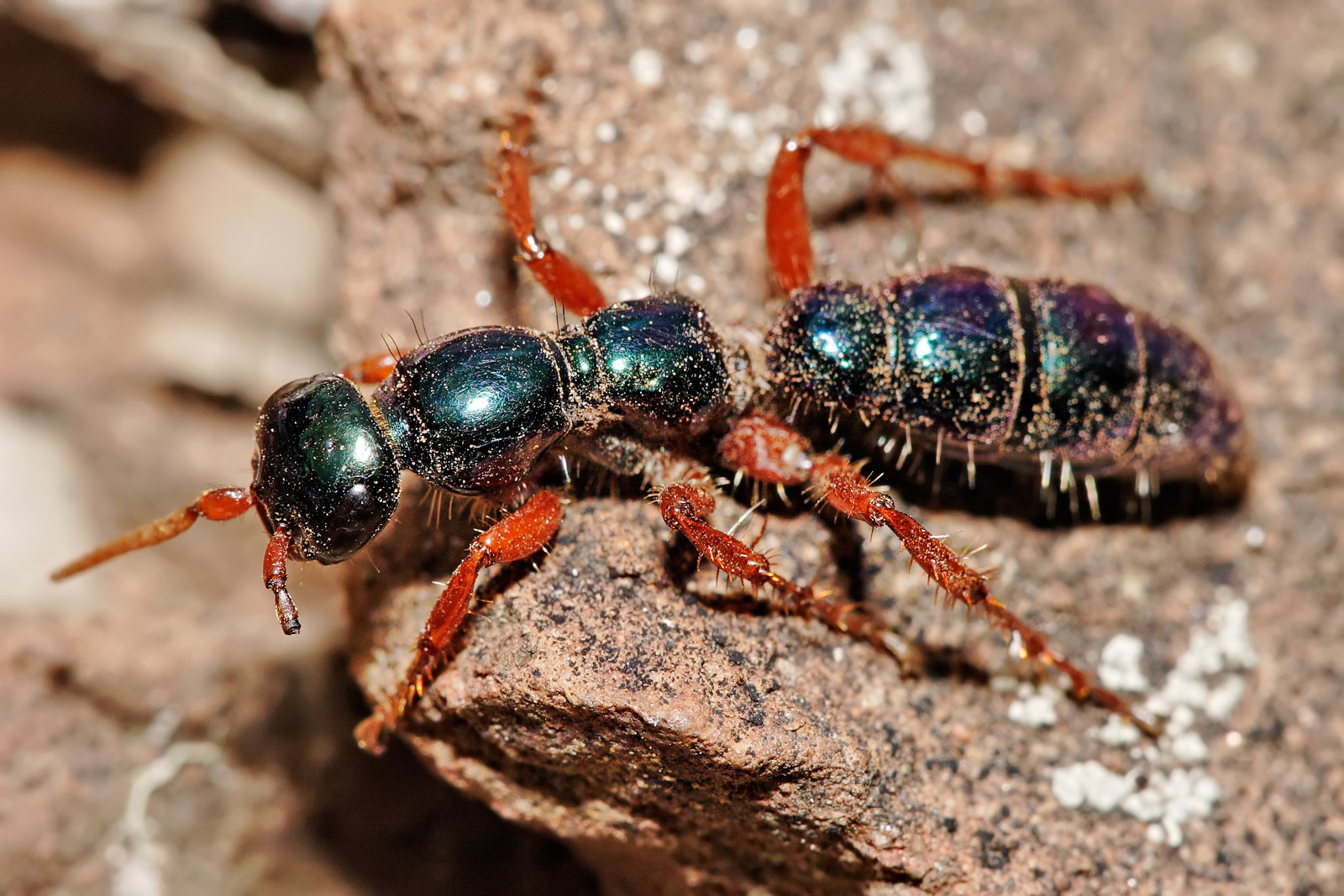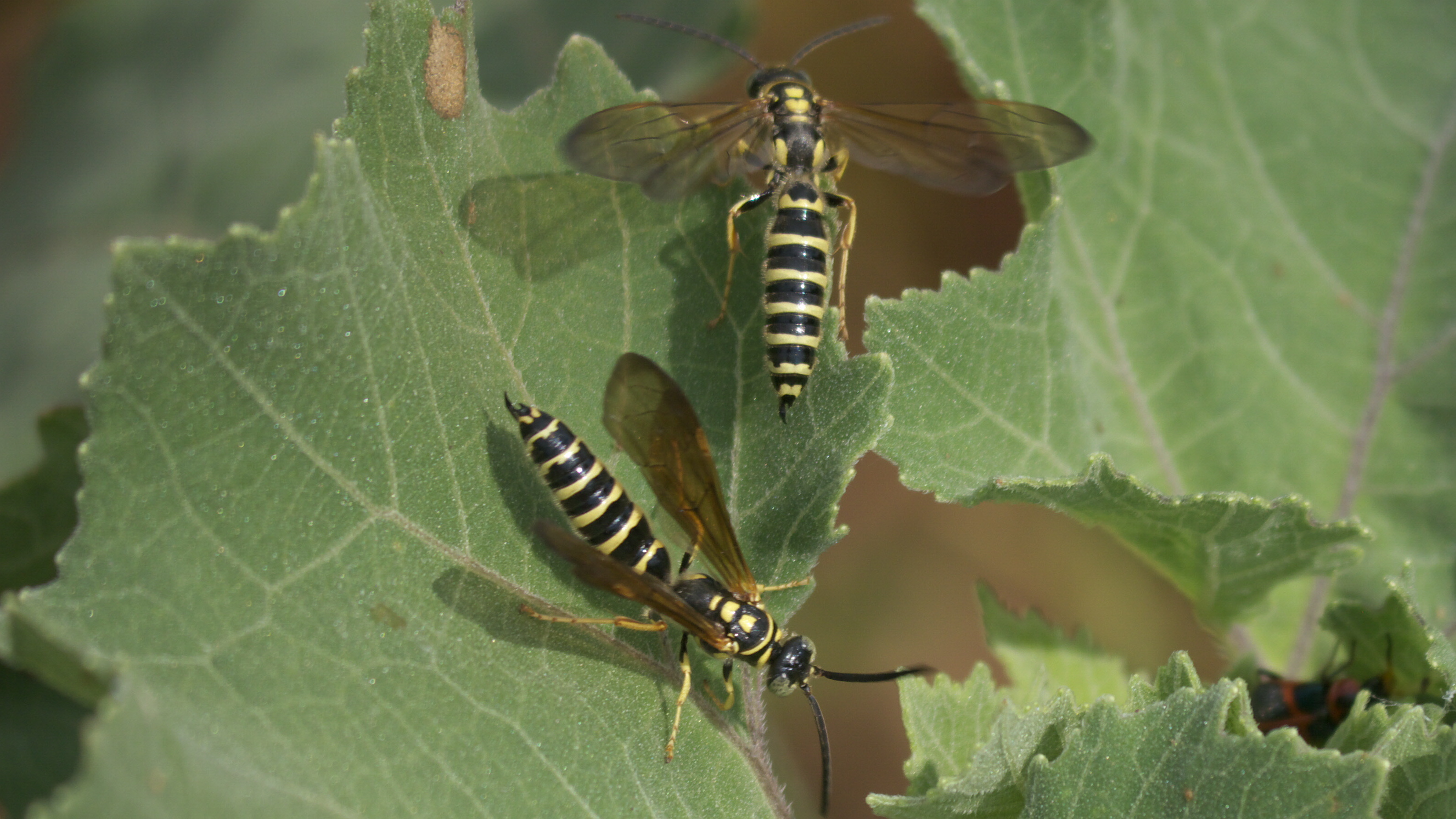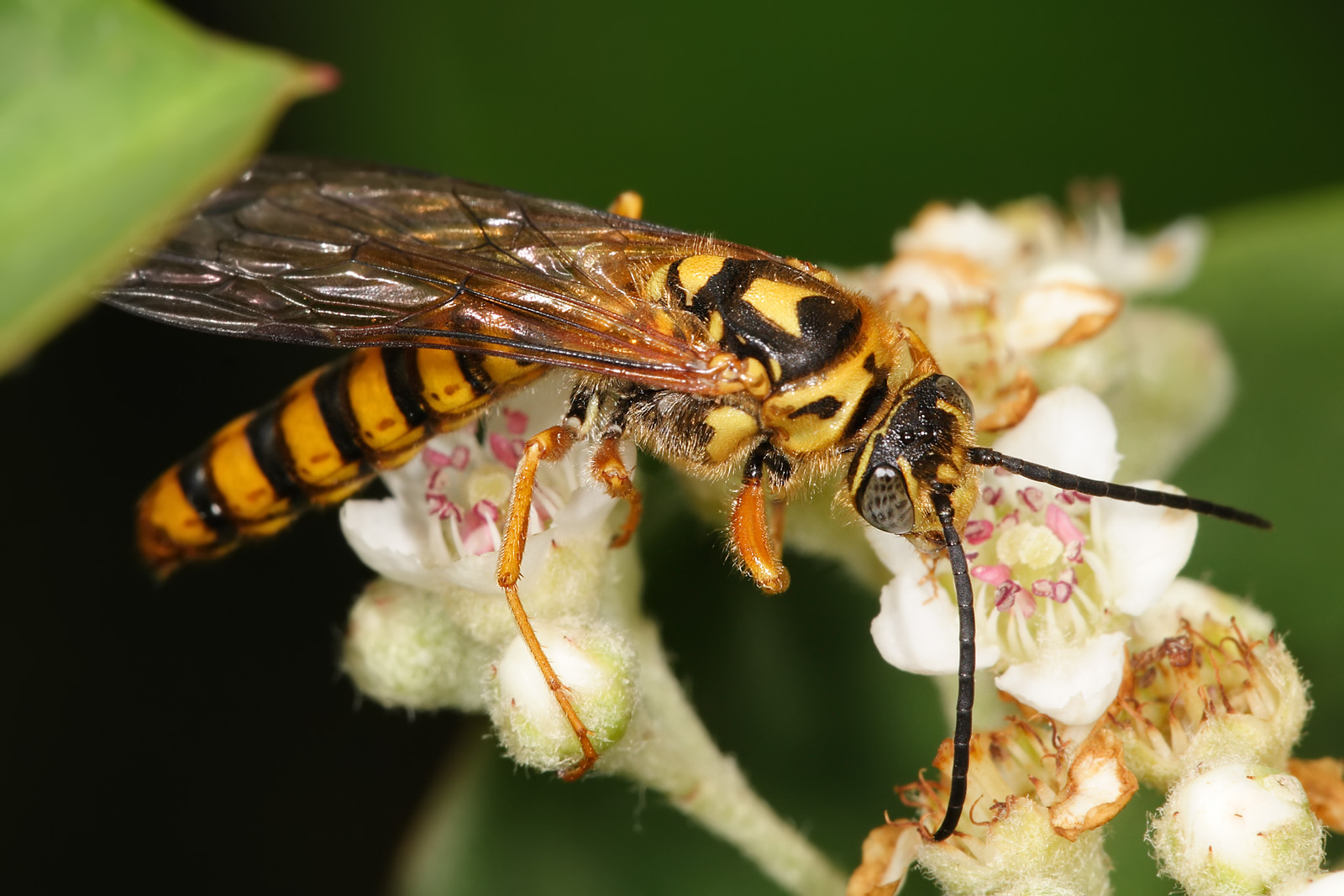Thynnid Wasp on:
[Wikipedia]
[Google]
[Amazon]
The Thynnidae (also known as thynnid wasps or flower wasps) are a family of large, solitary wasps whose larvae are almost universally




''Myzinum maculata'' Fabricius, a thynnid wasp
on the UF /
parasitoid
In evolutionary ecology, a parasitoid is an organism that lives in close association with its host (biology), host at the host's expense, eventually resulting in the death of the host. Parasitoidism is one of six major evolutionarily stable str ...
s of various beetle larvae, especially those in the superfamily Scarabaeoidea. Until recently, the constituents of this family were classified in the family Tiphiidae
The Tiphiidae (also known as the tiphiid wasps) are a family of large, solitary wasps whose larvae are parasitoids of various beetle larvae, especially those in the superfamily Scarabaeoidea. Until recently, this family contained several additiona ...
, but multiple studies have independently confirmed that thynnids are a separate lineage.
Description
Most species are small, but they can be up to 30 mm long. The females of some subfamilies (allDiamminae
The blue ant (''Diamma bicolor''), also known as the blue-ant or bluebottle, despite its name and appearance, is not an ant, but rather a species of large, solitary, parasitic wasp sometimes known as a flower wasp. It is native to south and sou ...
, Methochinae
Methochinae is a small subfamily of solitary wasps in the family Thynnidae, whose larvae are parasitoids of various tiger beetle larvae.
Genera
* ''Methocha
''Methocha'' is a genus of parasitoid wasps in the family Thynnidae.
The species of ...
, and Thynninae) are wingless, and hunt ground-dwelling (fossorial
A fossorial () animal is one adapted to digging which lives primarily, but not solely, underground. Some examples are badgers, naked mole-rats, clams, meerkats, and mole salamanders, as well as many beetles, wasps, and bees.
Prehistoric eviden ...
) beetle larvae, or (in one species) mole crickets. The prey is paralysed with the female's sting, and an egg is laid on it so the wasp larva has a ready supply of food. In species where both sexes are winged, males are similar in size to the females, but are much more slender. The males of species with wingless females, however, are often much larger than the females and have wings; the adults mate in the air, with the female carried by the male's genitalia. Adults feed on nectar
Nectar is a sugar-rich liquid produced by plants in glands called nectaries or nectarines, either within the flowers with which it attracts pollinating animals, or by extrafloral nectaries, which provide a nutrient source to animal mutualists ...
, and are minor pollinator
A pollinator is an animal that moves pollen from the male anther of a flower to the female stigma of a flower. This helps to bring about fertilization of the ovules in the flower by the male gametes from the pollen grains.
Insects are the maj ...
s. As some of the ground-dwelling scarab species attacked by thynnids are pests, some of these wasps are considered beneficial as biological control agents.
Taxonomy
The family has five subfamilies, which were previously placed inTiphiidae
The Tiphiidae (also known as the tiphiid wasps) are a family of large, solitary wasps whose larvae are parasitoids of various beetle larvae, especially those in the superfamily Scarabaeoidea. Until recently, this family contained several additiona ...
before it was found to be non-monophyletic.
Thynnidae genera are classified as:




Subfamily: Anthoboscinae
* '' Anthobosca'' Guérin-Ménéville, 1838 * '' Anthosila'' Genise, 1985 * '' Calchaquila'' Genise, 1985 * '' Cosila'' Guérin-Méneville, 1838 * '' Lalapa'' Pate, 1947 * '' Odontothynnus'' Cameron, 1904 * '' Paramyzine'' Berg, 1898Subfamily:
Diamminae
The blue ant (''Diamma bicolor''), also known as the blue-ant or bluebottle, despite its name and appearance, is not an ant, but rather a species of large, solitary, parasitic wasp sometimes known as a flower wasp. It is native to south and sou ...
* '' Diamma'' Westwood, 1835
Subfamily:
Methochinae
Methochinae is a small subfamily of solitary wasps in the family Thynnidae, whose larvae are parasitoids of various tiger beetle larvae.
Genera
* ''Methocha
''Methocha'' is a genus of parasitoid wasps in the family Thynnidae.
The species of ...
* '' Methocha'' Latreille, 1804
* '' Pterombrus'' Smith, 1869
Subfamily: Myzininae
* '' Allomeria'' Boni Bartalucci, 2007 * '' Braunsomeria'' Turner, 1912 * '' Meria'' Illiger, 1807 * '' Mesa'' Saussure, 1892 * '' Myzinum'' Latreille, 1803 * '' Poecilotiphia'' Cameron, 1902Subfamily: Thynninae
* '' Aelurus'' Klug, 1840 * '' Aeolothynnus'' Ashmead, 1903 * ''Agriomyia
''Agriomyia'' is a genus of wasps in the family Thynnidae
The Thynnidae (also known as thynnid wasps or flower wasps) are a family of large, solitary wasps whose larvae are almost universally parasitoids of various beetle larvae, especially tho ...
'' Guérin-Ménéville, 1838
* '' Ammodromus'' Guérin-Méneville, 1838
* '' Argenthynnus'' Genise, 1991
* ''Ariphron Ariphron (; Gr. ) was the name of several people from ancient Greek history:
*Ariphron, the father of Xanthippus, and grandfather of Pericles, both prominent Athenian statesmen. He was associated with the Alcmaeonid family.
*Ariphron, the brother ...
'' Kimsey, 2007
* '' Arthrothynnus'' Brown, 1996
* '' Aspidothynnus'' Turner, 1910
* '' Aulacothynnus'' Turner, 1910
* '' Belothynnus'' Turner, 1910
* '' Brethynnus'' Genise,, 1991
* '' Campylothynnus'' Turner, 1910
* '' Catocheilus'' Guérin-Ménéville, 1842
* '' Chilothynnus'' Brown, 1996
* '' Chrysothynnus'' Turner, 1910
* '' Deuterothynnus'' Brown, 2010
* '' Dimorphothynnus'' Turner, 1910
* '' Doratithynnus'' Turner, 1910
* '' Dythynnus'' Kimsey, 2001
* '' Eirone'' Westwood, 1844
* '' Elaphroptera'' Guérin-Ménéville, 1838
* '' Elidothynnus'' Turner, 1910
* '' Epactiothynnus'' Turner, 1910
* '' Eucyrtothynnus'' Turner, 1910
* '' Glottynnus'' Genise, 1991
* '' Glottynoides'' Kimsey, 1991
* '' Guerinius'' Ashmead, 1903
* '' Gymnothynnus'' Turner, 1910
* '' Hathynnus'' Kimsey, 2003
* '' Heligmothynnus'' Brown, 2010
* '' Hemithynnus'' Ashmead, 1903
* '' Kaysara'' Carnimeo & Noll, 2018
* '' Iswaroides'' Ashmead, 1899
* '' Leiothynnus'' Turner, 1910
* '' Lestricothynnus'' Turner, 1910
* '' Lophocheilus'' Guérin-Ménéville, 1842
* '' Macrothynnus'' Turner, 1908
* '' Mesothynnus'' Kimsey, 1991
* '' Neozeleboria'' Rohwer, 1910
* '' Oncorhinothynnus'' Salter, 1954
* '' Ornepetes'' Guérin, 1838
* '' Pampathynnus'' Carnimeo & Noll, 2018
* '' Phymatothynnus'' Turner, 1908
* '' Pogonothynnus'' Turner, 1910
* '' Psammothynnus'' Ashmead, 1903
* '' Pseudelaphroptera'' Ashmead, 1903
* '' Pseudoscotaena'' Carnimeo & Noll, 2018
* '' Rhagigaster'' Guérin-Ménéville, 1838
* '' Rhytidothynnus'' Brown, 2008
* '' Scotaena'' Klug, 1810
* '' Spilothynnus'' Ashmead, 1903
* '' Tachynoides'' Kimsey, 1996
* '' Tachynomyia'' Guérin-Ménéville, 1842
* '' Tachyphron'' Brown, 1995
* '' Tmesothynnus'' Turner, 1910
* '' Thynnoides'' Guérin-Ménéville, 1838
* '' Thynnoturneria'' Rohwer, 1910
* ''Thynnus
''Thynnus'' is a genus of wasps in the family Thynnidae.
Selected species
*''Thynnus brenchleyi'' Smith, 1873
*''Thynnus brisbanensis'' Turner, 1909
*''Thynnus conator'' Turner, 1910
*''Thynnus cookii'' Turner, 1910
*''Thynnus darwiniensis'' Tur ...
'' Fabricius, 1775
* '' Zaspilothynnus'' Ashmead, 1903
* '' Zeena'' Kimsey, 1991
* '' Zeleboria'' Saussure, 1867
References
External links
''Myzinum maculata'' Fabricius, a thynnid wasp
on the UF /
IFAS IFAS may refer:
* Institute of Food and Agricultural Sciences
* Integrated Fixed-Film Activated Sludge, a sewage treatment process
* International French adjectival system
In rock climbing, mountaineering, and other climbing disciplines, clim ...
Featured Creatures Web site
*
{{Taxonbar, from=Q21447838
Apocrita families
Insects used as insect pest control agents